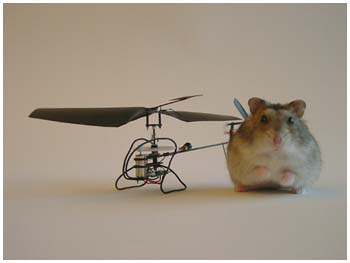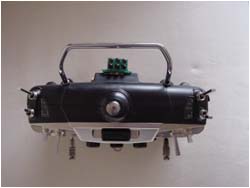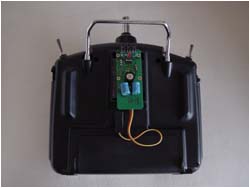| This is the master frame. In spite of my desire
to make everything as light as possible, I could not resist to design an
original shape and structure, that is more about form than about function
. The landing skids and the canopy frame are one long curved rod of 1 mm
carbon. |
Difficult to say this is anything else than
tiny. The tail boom is a super light tube of 1.3 mm diameter. Perfect to
guide the wires for the tail rotor motor. WES
technik is since 1996 one of my preferred spots to find new stuff.
Walter and Karin Scholl, the owners of WES, have greatly contributed to
this journey. |
A full tail gear sitting on a 2 Euro coin. It's
equipped with a 4 mm motor. Modulus of the gears is 0.2. It's actually a
nightmare to make it run smoothly. The axle is a 1mm carbon rod turning in
teflon bushings made from cyano super glue nozzle tube. |
| Thumbs up or thumbs down? Notice that the gear
is on the top side of the structure. This is usually made impossible by
the presence of the swashplate. No swashplate here! The little motor is a
6mm pager. To the right on the tailboom is the infra red module acting as
the 'antenna' to capture the signal. |
The tail rotor is molded over a CNC cut form.
For testing, ABS is used and heath-pressed over the mold and cut to shape
till results are satisfactory. Once the shape is final, a carbon cloth
copy is made. Most of the components made have a zero weight. Well, not
really. However, my weight balance is only reading 1/10th of grams and
that's too much for most parts. |
The tiny Infra Red receiver is a wonderful
development by Didel
from Switzerland. It is light, compact, and professionally assembled. One
major challenge is the soldering of all the exit wiring. I needed a lens
to do it. |




















